7 Kitchen Knives Every Cook Needs
This post may contain affiliate links. Read my full disclosure policy.
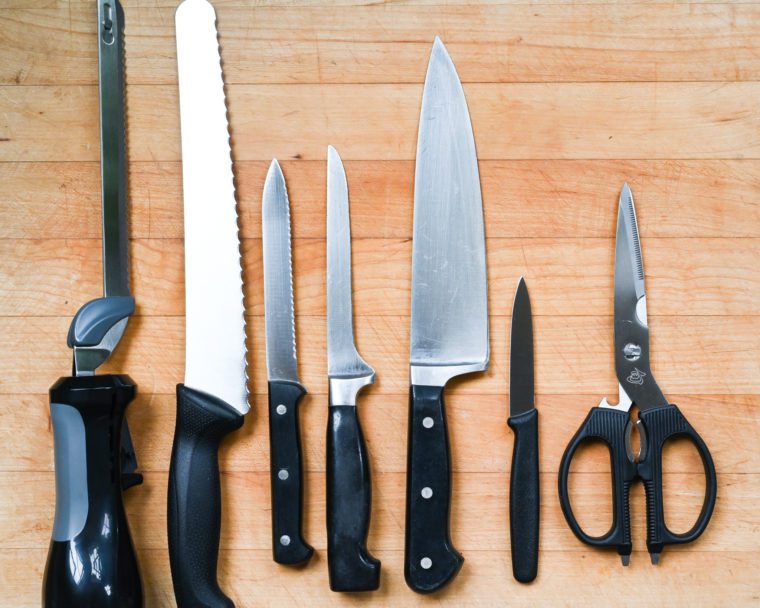
My first purchase when I started culinary school was a half dozen knives and knife case. I toted my knives to and from school every day and then, later, to and from the restaurant I cooked in. In fine dining restaurants, cooks are expected to bring their own knives, and they take a lot of pride in caring for them. Early on, I learned the importance of having good knives and keeping them sharp: it made life in a restaurant kitchen so much easier! This is the case at home as well; with the right kitchen knives, prepping food is not only more efficient but also safer and more enjoyable.
But with so many different kinds of knives, which ones do you really need? It can be tempting to buy a knife block set, but it’s not usually the best choice. Similar to pots and pans, when purchasing a set you’re likely to overpay for several knives you’ll rarely use, and you may not get all the knives you really need. Furthermore, it’s more cost-efficient to mix and match knives from different brands, as you don’t need a super-high quality knife for every task. In fact, sometimes an inexpensive knife performs better than a pricey one.
So whether you’re dicing onions, peeling apples, trimming meat, or slicing bread, these are the 7 essential kitchen knives (and the knife sharpener) every cook needs, along with my personal favorite for each one. With these knives at the ready, you’ll have the tools to prep any recipe that comes your way.
Chef’s Knife
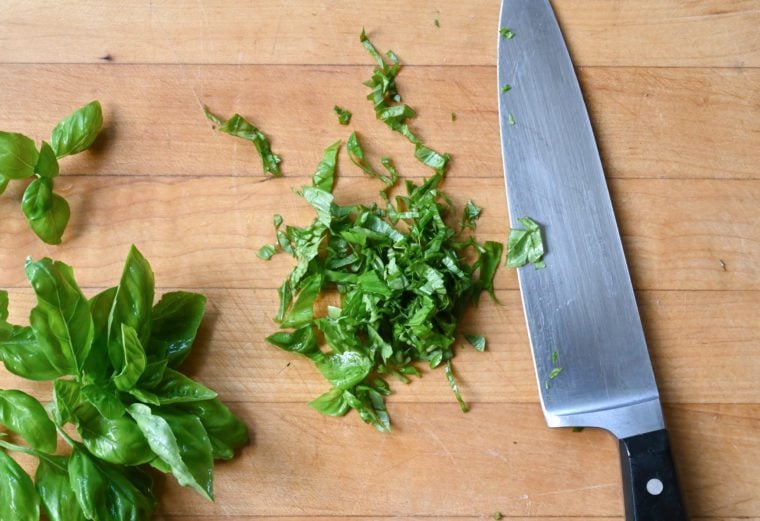
What It’s Used For: Almost everything! A chef’s knife is your kitchen workhorse and is used for chopping/mincing/dicing/slicing vegetables and herbs, cutting and disjointing large cuts of meat, chopping nuts, and smashing whole cloves of garlic.
What You Should Know: There is no knife more essential than a chef’s knife, so if you had to get by with just one kitchen knife, the chef’s knife is the way to go. Because of its versatility and how often you’ll use it, it’s important to get a high-quality one. A good chef’s knife should be comfortable to hold and almost feel like an extension of your arm. Chef’s knives are usually 8 to 10 inches long; the smaller ones are lighter and easier to handle. They have a prominent point and a sharp edge that features a sloping curve, which allows you to execute the proper rocking motion cutting technique. When using a chef’s knife, you don’t use a sawing motion, like you would a bread knife, or a straight up-and-down motion but rather a rocking, or down and forward, motion while keeping the knife’s tip on the board, as shown here.)
❤️ My Fave: WÜSTHOF Classic 8-Inch Chef’s Knife
Bread Knife
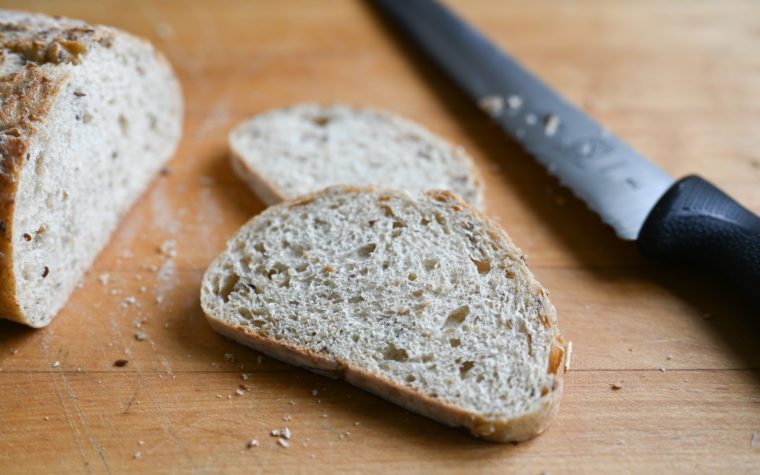
What It’s Used For: Slicing bread, leveling delicate cake layers, slicing cakes and quick breads, cutting through dough, cutting thick-skinned fruits, like melons, pineapple, and winter squash
What You Need To Know: A bread knife is a long knife with a saw-toothed edge, which helps it efficiently slice through all types of bread and baked goods without squishing the crumb, as well as thick-skinned fruits and veggies. Bread knives range in size; it’s best to get one with a blade at least 10 inches long so that it can handle large loaves of bread or watermelons.
❤️ My Fave: Mercer Culinary 10-Inch Bread Knife
Paring Knife
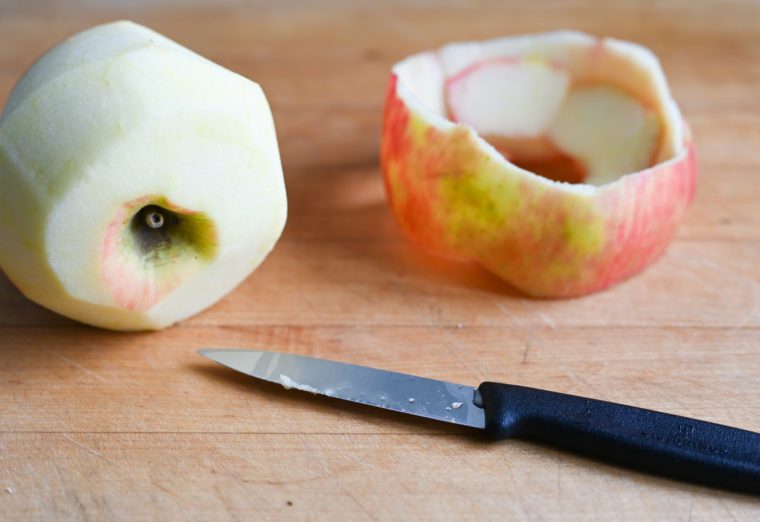
What It’s Used For: Smaller and more nimble tasks, like peeling apples and potatoes, hulling strawberries, coring tomatoes, slicing shallots and garlic, trimming ribs from peppers, deveining shrimp, pitting dates and cherries
What You Should Know: With a blade measuring 2-1/2 to 4 inches, the paring knife is the “baby” of your knife collection. A lightweight plastic handle and a slightly flexible blade is ideal for a paring knife because it is the one knife that is often used in the air rather than on a cutting board. The ideal size for a paring knife is 3 to 3-1/4 inches long; anything shorter may not reach through all the food you may use it for and anything longer is harder to control.
❤️ My Fave: Victorinox 3.25 Inch Paring Knife
Boning Knife
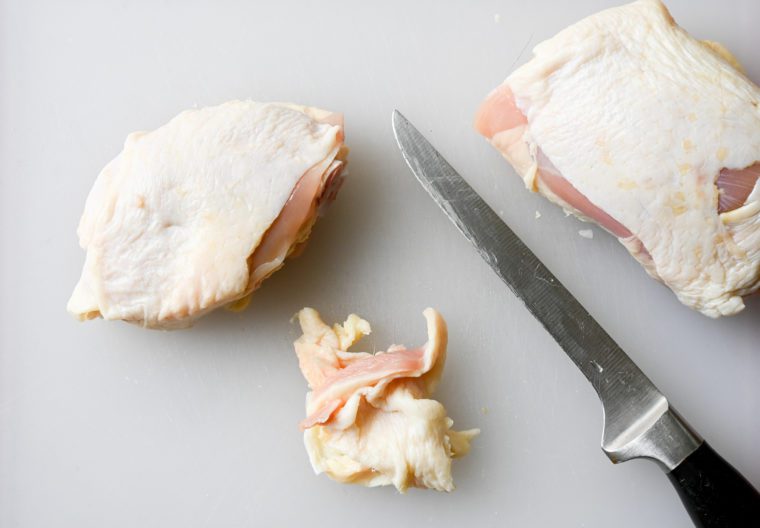
What It’s Used For: Breaking down a chicken into pieces; deboning meat or poultry; removing the skin, fat, and silverskin from meat; cutting the skin off of fish fillets
What You Should Know: A boning knife has a narrow and sometimes flexible blade that tapers to a pointed tip that allows you to maneuver in tight places. You can get away without one, but it comes in handy if you handle meat on a regular basis and especially if you do any butchering. A boning knife is similar to a fillet knife. The difference is that boning knives are used primarily on meat but also on fish while fillet knives are used exclusively for fish. As long as you get a boning knife with a semi-flexible blade, it can be used on both meat and fish and is therefore more versatile.
❤️ My Fave: ZWILLING Professional “S” 5.5-inch Flexible Boning Knife from Amazon (or purchase direct from Zwilling)
Serrated Utility Knife
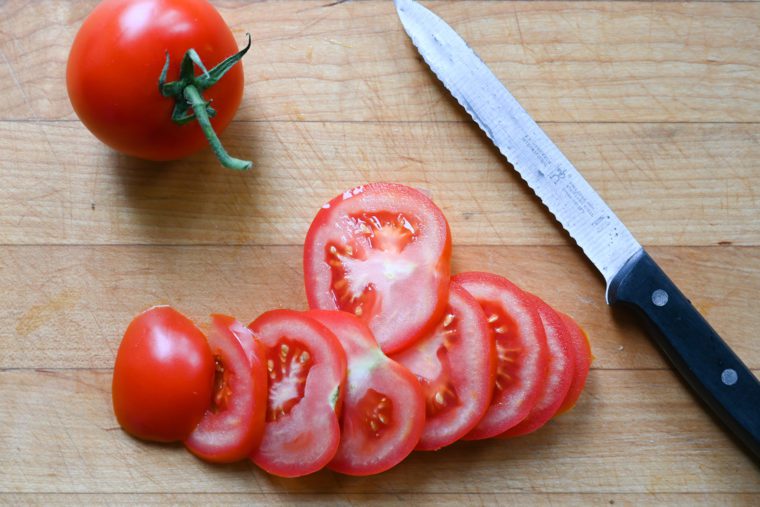
What It’s Used For: Slicing tomatoes, fruits with thick skins, salami, rolls, sandwiches
Why You Need It: When a bread knife is too big for the job, a serrated utility knife is the way to go. It cuts cleanly through delicate fruits and veggies without crushing them, and it is also ideal for cutting sandwiches and baguettes. It’s a great all-purpose knife to have as part of your collection, and it remains sharp for a long time without needing to be sharpened. Utility knife blades range in size from 4 to 7 inches in length; around 5 inches is ideal.
❤️ My Fave: ZWILLING Professional “S” 5-inch Serrated Utility Knife from Amazon (or purchase direct from Zwilling)
Kitchen Shears
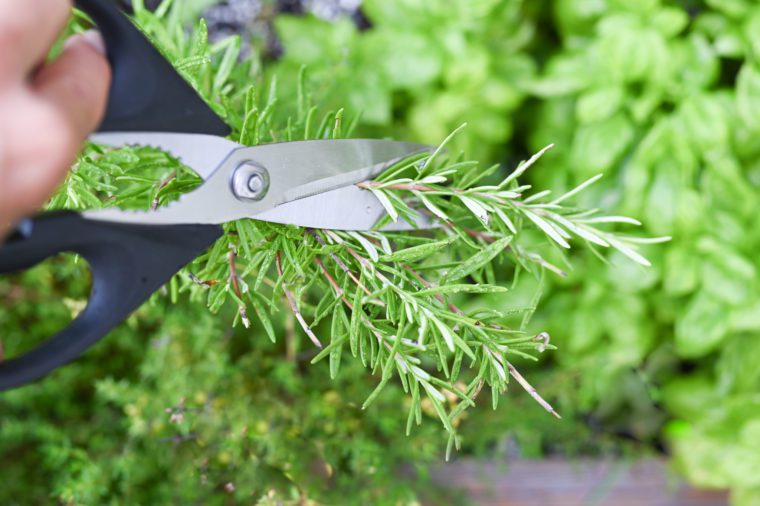
What They’re Used For: Snipping herbs, cutting up bacon, trimming the fat off chicken, chopping canned tomatoes (right in the can), removing the backbone for a spatchcocked bird, opening packages of food
What You Should Know: Kitchen shears are durable scissors specifically designed for kitchen use. They have a covering on the handle that makes them comfortable to use, blades that separate for easy cleaning, and some shears (like the Shun Shears below) have a plier-like portion that you can use to open jars and bottles and crack nuts. Keep in mind that like knives, they should be sharpened or replaced when dull.
❤️ My Fave: Shun Multi-Purpose Shears (or, for fewer bells and whistles, KitchenAid All Purpose Shears)
Electric Carving Knife
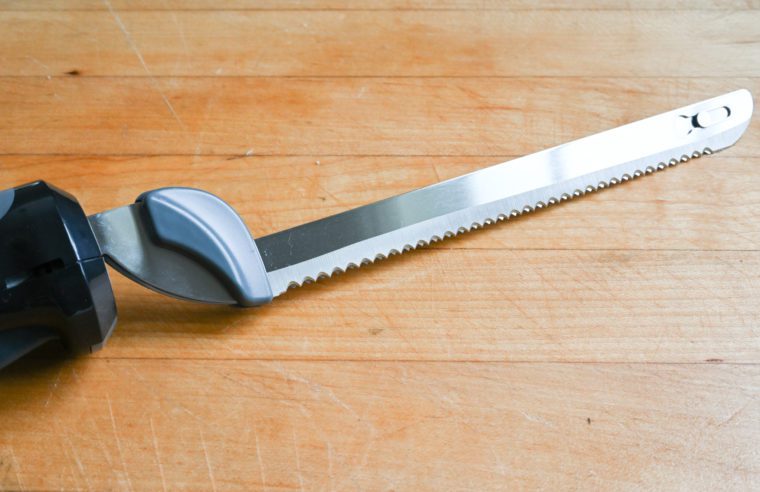
What It’s Used For: Carving large roasts, like turkey or brisket, and slicing bread
What You Should Know: Although a big chef’s knife can handle most large tasks in the kitchen, an electric carving knife is a handy tool to have, especially around the holidays. Though it may seem like a tool from yesteryear, it’s incredibly useful for getting clean, even slices of roasted meat and turkey. Its two blades move back and forth quickly, keeping you from having to “saw” whatever you’re slicing.
❤️ My Fave: BLACK + DECKER Electric Carving Knife
Knife Sharpener
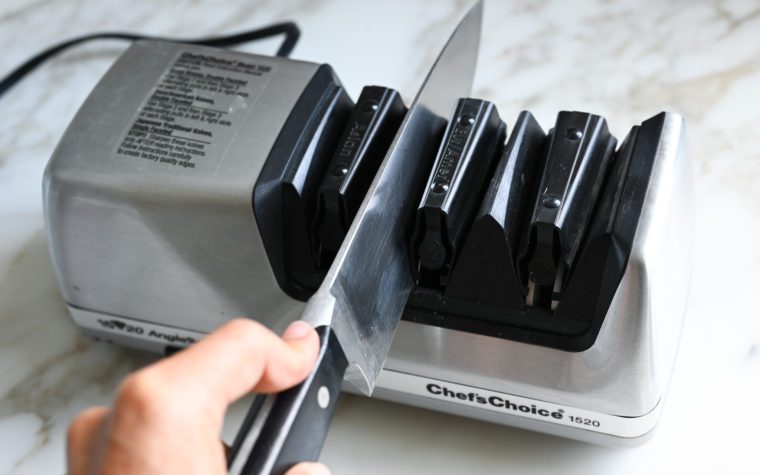
What It’s Used For: Keeping your knives sharp
What You Should Know: It is critical to sharpen knives regularly. Sharp knives make life in the kitchen so much easier, and they are also much, much safer. Most knife accidents are the result of dull knives that “slip” off whatever they are being used to cut. If you haven’t sharpened your knives in a while, you’ll be amazed at the difference a newly sharpened knife makes! You can sharpen knives by hand using a whetstone and a honing steel, but it takes experience to do it properly. You can also take your knives to a professional knife sharpener (many cookware and hardware stores offer this service for free), but it’s easy to do at home with a good electric knife sharpener. Depending on usage, knives should be sharpened every few months.
❤️ My Fave: Chef’s Choice Electric Knife Sharpener (see how it works here)
Final Thoughts
If you’re just starting to stock your kitchen, keep in mind that you don’t need to buy all of these kitchen knives at once. Good knives can be pricey, so consider the kind of cooking you do to determine which ones you really need. If you need any guidance about which knives may be best to start with, leave a comment below – I’m happy to weigh in!

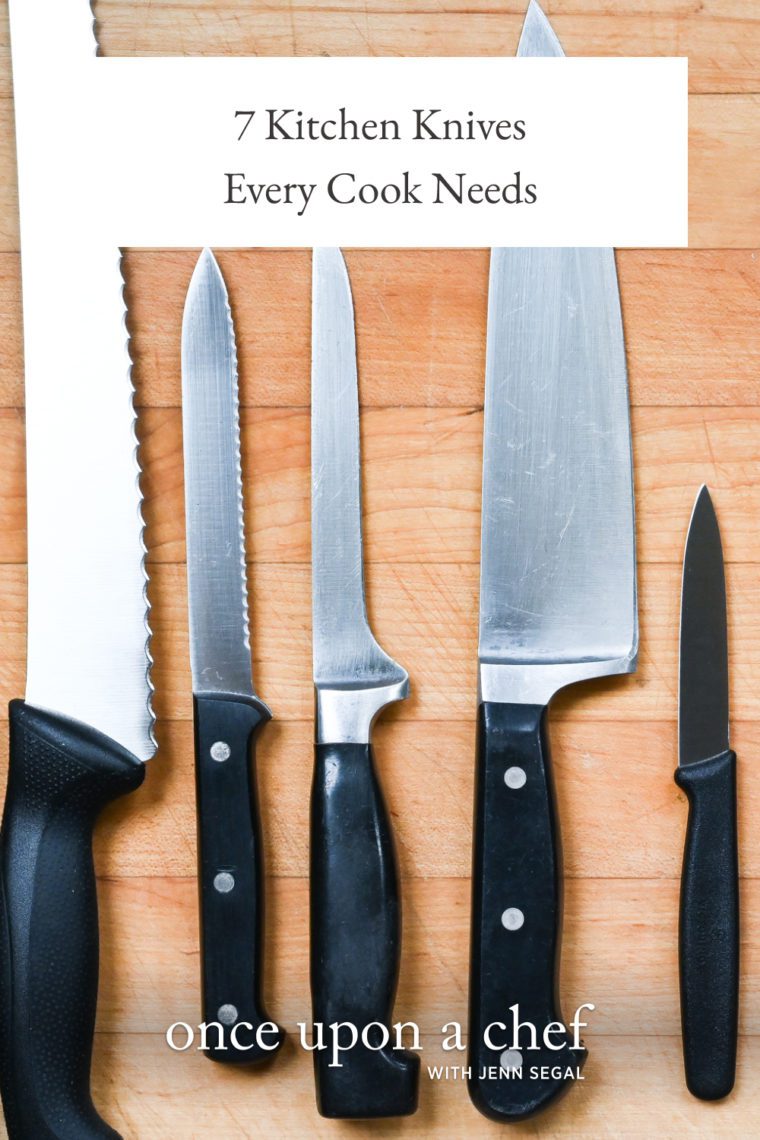
Two comments
1) it might be helpful to comment on carbon steel knives and how they stain. They hold an edge well but tend to gain patinas like an old washtub, no matter how careful you are. If you want pretty, stick with stainless.
2) I have a 6” utility knife that I tend to pick up more than any other. I believe it is classified as a “petty knife”, and I find it indispensable, while the chef’s knife often is just “too much knife” for the job.
How do you sharpen a serrated knife? Thanks for advice.
Hi Mary, I have a slot on my electric knife sharpener to accommodate a serrated knife. If you don’t have a knife sharpener like that, I’d recommend taking it to a cookware or hardware store that offers that service as they will do the best job on it. 🙂
What a great post. Very helpful, especially with brands you have. I have the little paring knife and don’t know how I lived without it. It’s so sharp, I even reach for it for tomatoes.
I have both the wustof 8” chef and 6”. I love and prefer the 6”. I’m most interested in why you prefer the larger. You have so much more experience, I just want to be sure I’m not missing something
Hi Christine, You’re not missing anything; it’s really just personal preference and what size feels comfortable. 🙂
This is an extremely helpful and informative post. Thank you!
I have a serrated “tomato” knife – kinda like a mini bread knife but lighter. I love it. I’m an older cook in my 70’s and so I didn’t start out with it but I highly recommend it to anyone who enjoys preparing food. Thanks for this article Jenn!
Try New West Knifeworks knives- the best!
Take a look at a Japanese chefs knife. About same price. Much lighter, stays sharp longer and no ricasso so it is much easier to sharpen hilt to tip. I own several German workhorse chefs knives but I don’t use them anymore.
I didn’t care for the Japanese knives. I didn’t care for the straight handle. The German knife I bought had subtle insets for the fingers to rest in and I found that more comfortable for the long term use.
I hate to disagree but that’s an unfair characterization of all Japanese knives. Traditional Japanese knives come with “wa” handles, the squarish straight handles I believe @Ruth is speaking about. They are lighter and takes some getting used to as the balance point is farther up the blade. A number of Japanese knife makers use the western styled “yo” handles and they look and perform like western knives but come with, in my opinion, better performing (and sometimes exotic) Japanese steel with 12 – 15 degree blade angle vs the 20 degree Western knife angle. It takes a bit of effort to seek them out (e.g. Enso (house brand sold by Cutlery and More), Tojiro which are excellent value, Takamura, Ashi Hamono, etc.) but these Japanese knives with Western handles are my favorite kitchen knives.
Would love for you to try knives from New West Knifeworks. Love these knives! I found out about them when my son-in-law went to work for them in Victor, Idaho.
Great story how it all got started.
I am such of fan! Have not ever been disappointed by any recipe I have cooked. Thank you!!
I would add that it’s extremely important for a left-handed person to search for a left-handed bread knife. Even the expensive ones are only serrated on one edge–the one a right-handed person needs. A southpaw (raises hand) really struggles to get a clean straight cut.